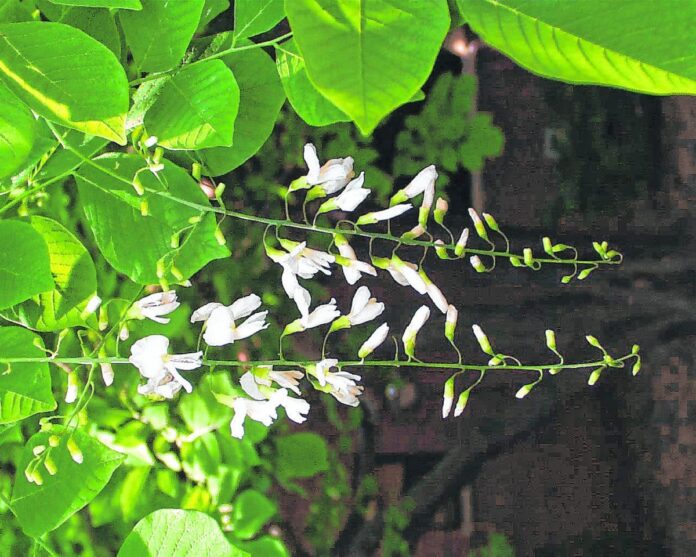
Nearly 600 acres of Yellowwood State Forest have received a special conservation designation designed to protect and encourage the growth of the endangered yellowwood tree.
The Division of Forestry has named the 591 acres east of Crooked Creek Road as a High Conservation Value (HCV) forest area. It’s called the Yellowwood Conservation Area at Yellowwood State Forest.
The HVC designation means that the top priority of forest management activities done in this area, including forest stand improvement, invasive species control and timber harvesting, will be the conservation and restoration of yellowwood trees, the Division of Forestry said in a press release.
This does not mean that timber harvesting won’t happen at all in that area; it means that forest management activities will be designed around the yellowwoods.
[sc:text-divider text-divider-title=”Story continues below gallery” ]“Timber harvests will still be carried out within the yellowwood conservation area, but will have yellowwood trees as a top priority,” explained Mike Spalding, resource specialist for Morgan-Monroe and Yellowwood state forests. “What this means is that while foresters take numerous factors into account when determining individual trees to harvest, yellowwood retention would be at the top of the list.
“For example, a common timber marking strategy is to mark a yellow-poplar tree adjacent to an oak in order to give the oak more resources to grow. If a yellow-poplar tree is competing with a yellowwood tree, the yellow-poplar would be marked to give that yellowwood more resources, i.e. space for crown development and sunlight for flowering/seed production.
“Another potential timber harvesting strategy is for regeneration and recruitment of new yellowwood trees,” he added. “In areas where seedlings and saplings are present, the overstory may be harvested to allow these yellowwoods to continue to develop. Throughout the regrowth of those regeneration areas, follow-up thinnings would be performed to ensure the yellowwoods continue to thrive.”
Yellowwood trees are an endangered tree species known to occur naturally in Indiana, but only in Brown County, in Yellowwood State Forest and Brown County State Park, the Division of Forestry reported.
Yellowwood trees (Cladrastis kentukea) receive their name from the deep-yellow heartwood, which was, at one time, used to make yellow dye, reports the Iowa State University Extension agency.
The tree’s bark is smooth and gray, like an American beech tree. The yellowwood produces fragrant white flowers in clusters, which can be used to make honey, according to Purdue University’s “native trees of Indiana” website.
In fall, the leaves turn a bright yellow and the tree produces a small seed pod that resembles a pea pod.
Yellowwoods grow to be about 50 feet tall.
“Yellowwood trees require abundant sunlight early in their life,” added Allen Pursell, director of forest conservation for The Nature Conservancy in Indiana. “Current conditions, which include crowding out by maple trees among others and the presence of invasive species, are preventing that. Once established, yellowwoods need disturbance and sunlight to compete well with the more shade-tolerant maple and beech trees.”
Yellowwoods were discovered in Indiana by Civilian Conservation Corps workers at Brown County State Park in 1933; they were later discovered on what became Yellowwood State Forest.
This is the northern end of the species’ natural range. The closest known concentrations of yellowwoods to Indiana’s yellowwoods are in Kentucky and the southern tip of Illinois.
“Because Indiana’s yellowwood trees are located so far from any other yellowwoods in the United States, scientists at one time wondered if they might be genetically distinct from all other yellowwood trees,” Pursell said in a press release.
Genetic analysis done by TNC and Purdue University found that the ancestors of these trees arrived to what would become state land thousands of years ago and they’ve since been isolated from all other yellowwoods.
“In early June, the showy cluster of white flowers is a treat to see in our Brown County woodland,” Pursell wrote.
“Like all rare plants and animals, the yellowwood is worth saving.”
Yellowwood State Forest comprises 25,117 acres, so this HVC area covers about 2 percent of the forest’s total acreage.
Public recreational use of the HVC area will continue to be encouraged. Among these activities are hunting, hiking, mountain biking, and horse riding on designated trails.
The closest public access point to the HVC area is the southernmost trailhead for the Tecumseh Trail on Crooked Creek Road, which is also a disabled hunter access parking lot, Spalding said. From there, a trail can be taken east into the area.




